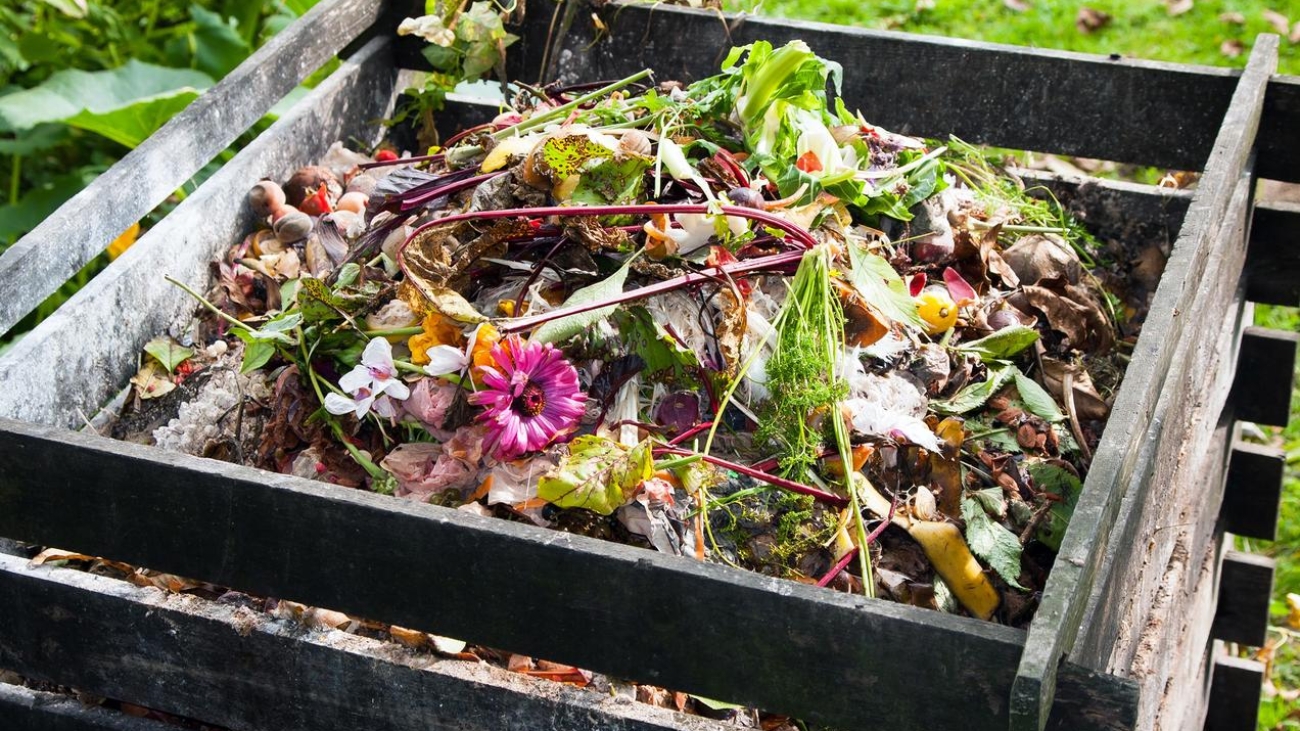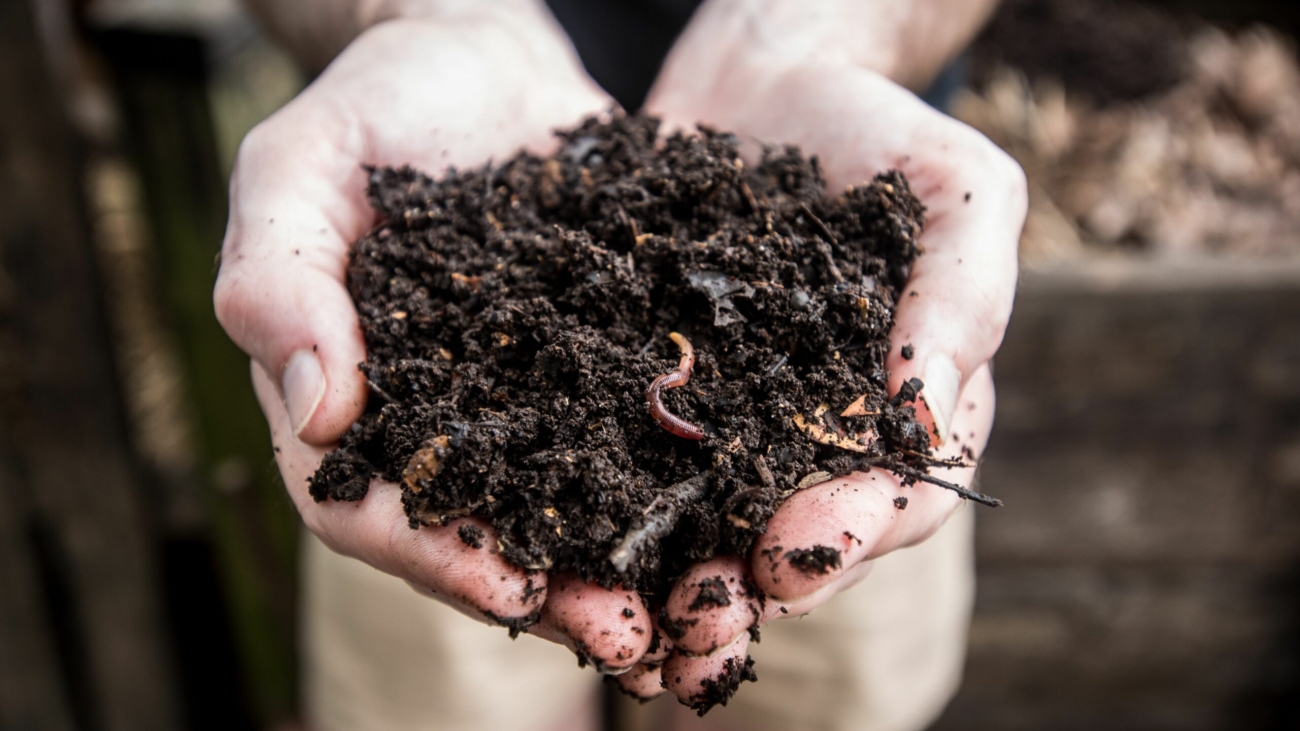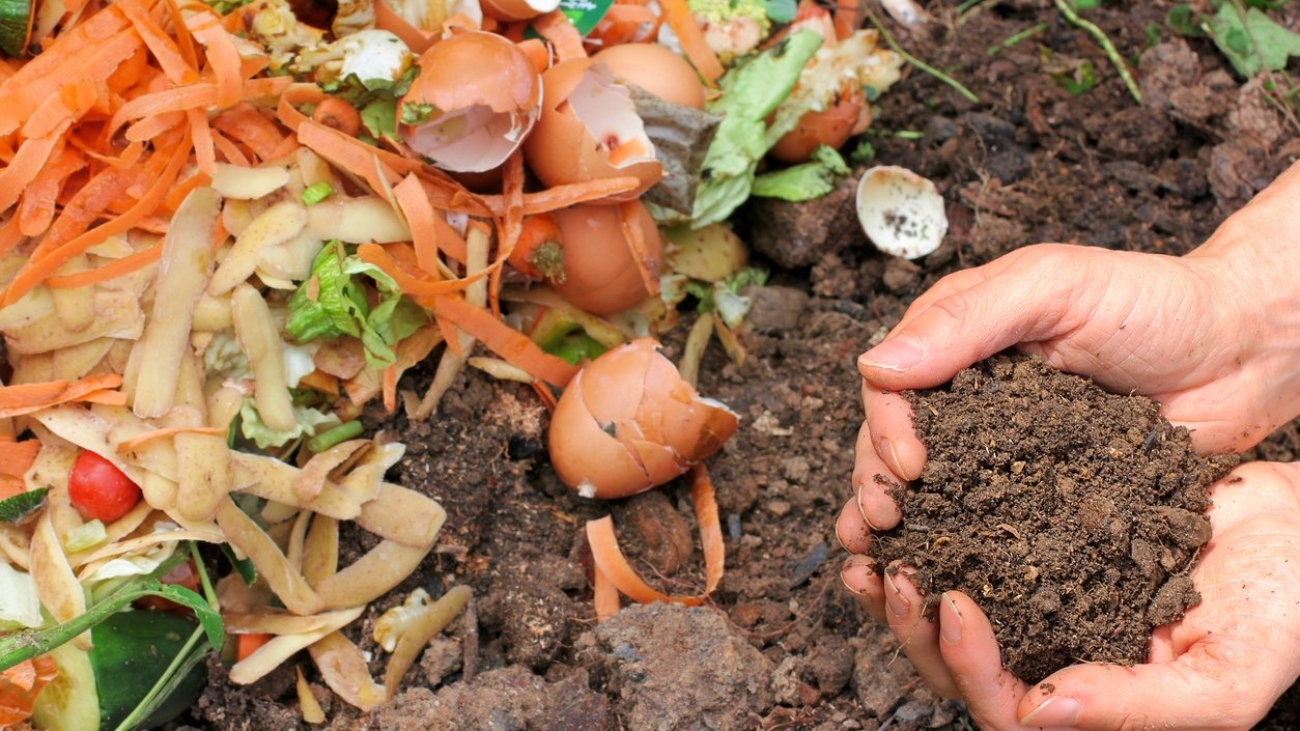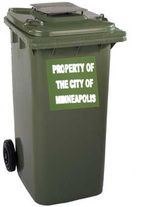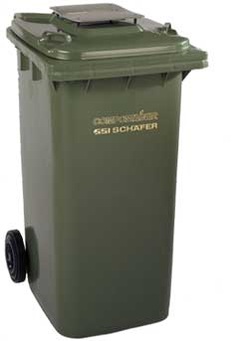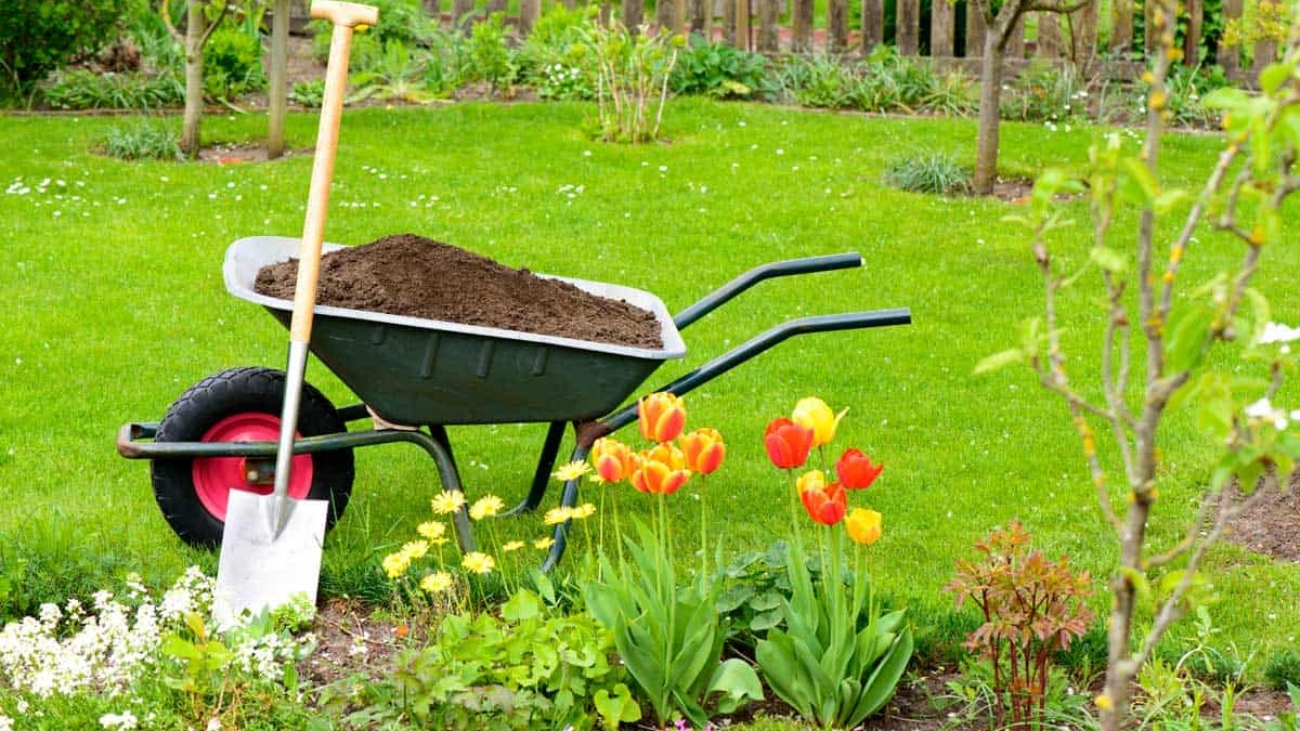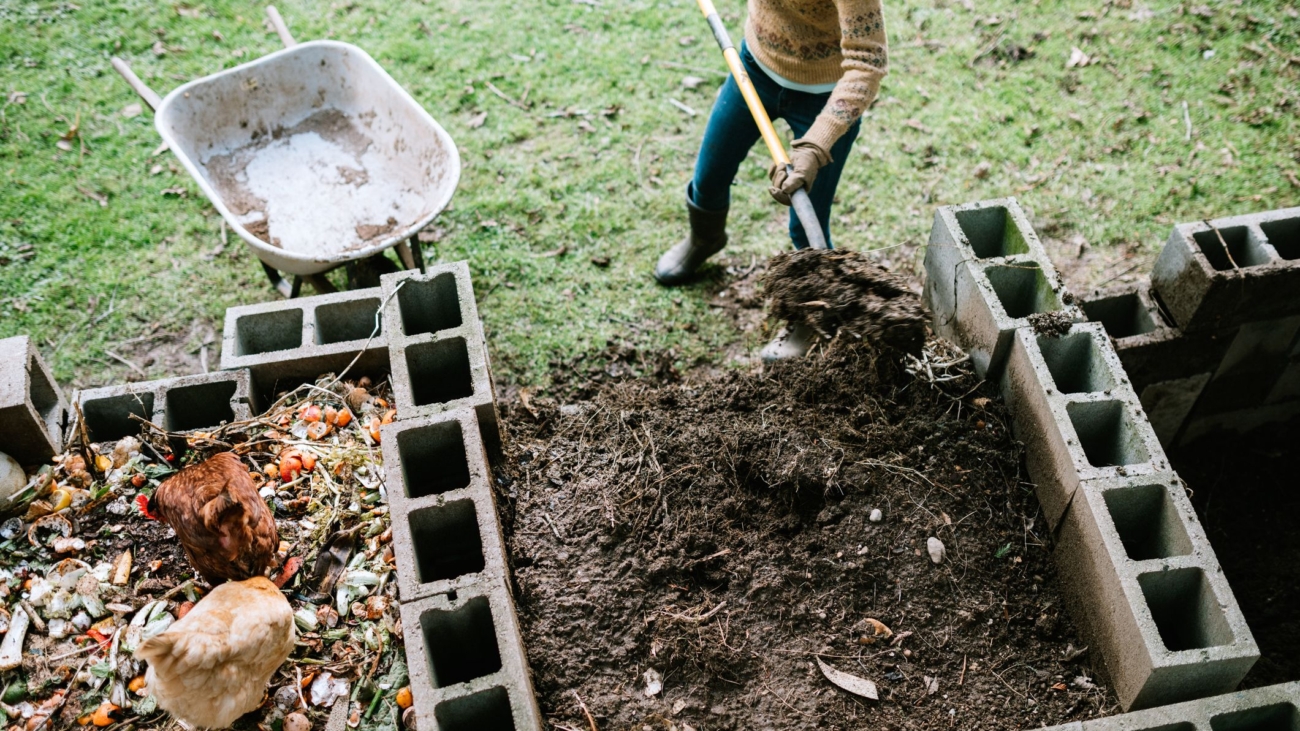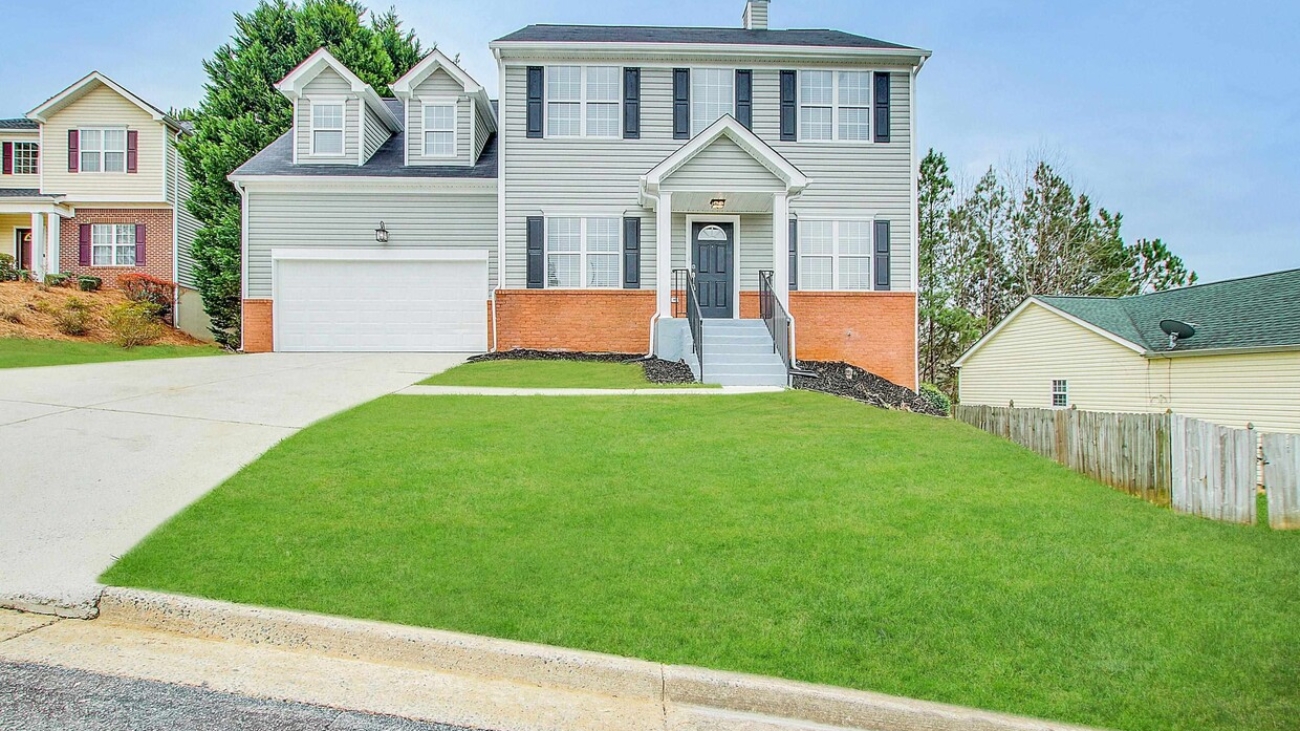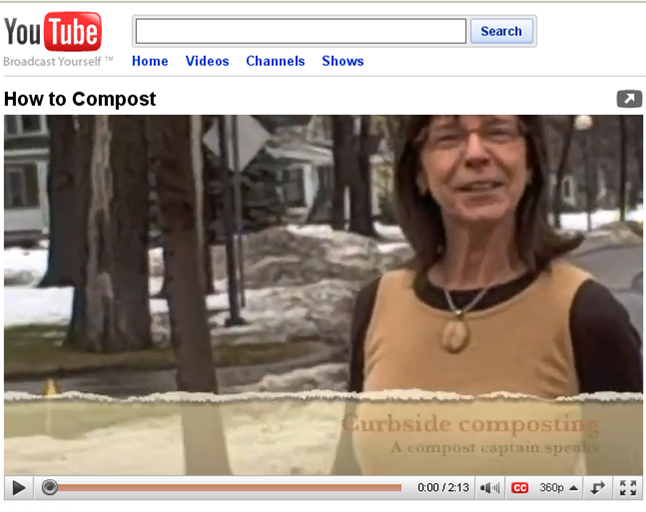The City of Minneapolis has approved a curbside collection of compostable items for all of the city! All of Linden Hills can sign up now by contacting Solid Waste & Recycling at [email protected].
Residents of single-family, duplexes, and fourplexes are now able to recycle their organics through the curbside collection program. You don’t need a backyard composter, all you need to have is a willingness to try something new. 32% of Minneapolis households are now participating. It’s so easy! The city drops off a wheeled green cart, you simply keep your organic material -food scraps and soiled paper – separate from your plastic and recycling and simply wheel that material to the curb on your regular garbage pick-up day. If you can take out the trash you can curbside compost! For ideas on how to set up your kitchen for composting, click here. For ideas for setting up your other recycling, click here.
Click on the video on the right to see why composting is so easy. Or view Hennepin County’s video about recycling organics in every room of your home.
Sign up for curbside composting by clicking here. To receive updates and tips from LHP&L, sign up for our mailing list (join here).
Click here to read about our favorite composter in Milwaukee.
Click here for info on Fruit flies and gnats.
Restaurants that Compost: Support those who support the earth!
Love what we’re doing? We could use your support (via financial donation or committee help). Click here for more information.
FREQUENTLY ASKED QUESTIONS (FAQ)
COLLECTION:
How does it work?
Once you sign up to participate in the pilot (see above), the city will deliver a 65-gallon green “organics” cart to your home. It looks very similar to the normal black-wheeled bin that you bring out to the curb before your garbage collector arrives. From then on, you will wheel both bins out to the curb on your regular collection day and the city will take your compostables (green cart), and your non-compostable garbage (black cart). Feel free to call the city and request they replace your large 94-gallon black cart with a smaller version (and save $3 per month) if space is an issue. You’ll probably find that there’s very little to put in your black cart anyway. Many people find they only need to put their black cart out every 2 weeks -one less chore on garbage night!
What IS compostable?
View the complete list of what is and isn’t compostable.
Food scraps, including fruit and vegetable peelings, meat, leftovers, etc. Paper products that you’re not currently recycling -(continue to recycle newspaper, office paper, cardboard, corrugated card in your usual manner) that is, tissues, paper towels, egg cartons, pop boxes, a paper that’s touched food e.g. paper plates, pizza boxes; waxed containers such as milk cartons, and packaging from fridge and freezer products. By participating in the composting program, you’ll find there should be no paper in your trash at all. Other items that are biodegradable include coffee grounds and filters, tea bags, lint from your dryer, vacuum bags, old potted plants, and unusable old (non-synthetic) clothes. Note, that yard waste will not be collected with the organics at this time. You can find a comprehensive, A-Z list of what is and isn’t compostable here.
What is NOT compostable?
There should be very little in your regular black trash cart apart from plastics (plastic wrap, plastic packaging, nonrecyclable plastic bags) and broken glass, ceramics, rubber, leather, non-recyclable metal (this includes foil-lined items like candy bar wrappers and chip packets), diapers and pet feces. Keep yard waste out as usual. Minneapolis recycles all plastics 1-7, plus waxed cardboard-like milk and OJ cartons, plus aseptic packagings like juice boxes and foil-lined soup boxes.
My kitchen is so tiny. How should I set up my home for composting?
Click here for several different ways to set up your trash system -1,400 people can’t be wrong – they thought it would be tricky and then discovered the truth – it’s SO EASY!!!
What are the benefits of composting?
Click here.
How can I get some compost back for my garden?
Just as aluminum can recyclers and plastic bottle recyclers don’t give us free cans of pop or bottles of water, the companies that create compost are looking to make a living and create a valued resource, not give away their product for free. We will have some free compost to give away at the Linden Hills Festival, but if you want more than a pail full, you can order bulk compost here.
Videos
The videos from Hennepin County below explain the three options for recycling organics – organics composting, food-to-people, and food-to-animals.
Videos in English
For a full listing A through Z, of what is and isn’t compostable, please click here.
TIPS and HINTS:
- Line a mini kitchen bin or paper bags with shredded paper used paper towels, napkins, used paper plates, or a sheet of newspaper to help absorb liquid or moisture that escapes from wet food scraps.
- Wrap food scraps like meat, fish, poultry, cooking grease, sauces, soups, etc., in used paper products like used paper towels before placing them in the mini kitchen bin.
- During warm months, you can freeze food scraps like shellfish or fish until collection day.
- Clean out your fridge, freezer, or cupboards of expired food products just before your collection day instead of after your collection day.
- Keep your green cart outside in a shady, convenient, well-ventilated area.
- During the winter, move the green cart closer to your house to allow for easier access.
- Keep air vents located at the bottom of the green cart clear to allow for air circulation.
- During warm months, place your green cart curbside each week on your scheduled collection day even if your cart is not full.
- Rub the inside of your green cart lid with vinegar and/or sprinkle a small amount of rock salt, baking soda or lime inside your cart to control fruit flies and prevent pests.
All my neighbors have carts but I didn’t sign up right away. Is it too late to sign up?
No, you can still sign up, just email us using the signup link in red above.
What about yard waste?
At this point, yard waste will NOT be collected. Yes, this IS different than what we’d originally heard, but at this stage, please continue your regular yard waste routine. We hope that yard waste will be allowed at a later date.
Where is our organics material being taken? Will it be burned?
The organics will be taken to a commercial composting facility to be turned into compost. It will NOT be burned. The trash from your black cart will continue to go to the HERC incinerator and be burned, as is done currently with all our garbage. The material in the green cart is diverted from this regular process, which is much better for the environment. The organics will be taken here to be turned into compost.
Has this been done before?
Hennepin County has sponsored pilot organics collections in Minnetonka, Wayzata, and Orono. It has also been city-wide and ongoing in Hutchinson MN. In fact, until the 1950s, organics were collected throughout Minneapolis-St Paul. Linden Hills will be the first Minneapolis neighborhood to re-start collecting.
BAGS
Do I have to buy compostable “bio bags” instead of regular garbage bags? Where can I buy biodegradable bags?
No, you don’t have to use bio bags. Plastic bags, including regular trash bags, are NOT accepted. However, you can wrap your compostables in several sheets of newspaper and then throw them in paper bags if you prefer. Or you can use a milk container or ice cream container and stuff those with food scraps and toss them in a paper bag or directly in the cart if they’re sealed well and won’t spill. You could also line your cart with a giant paper bag (lawn and yard size) from a hardware store which is about 30 cents per bag and then seal it up each week before garbage day. See “implementation” below or kitchen setup ideas for more ideas.
If you are going to switch to compostable bags, which makes things very clean and easy, they can be purchased at Clancey’s Meat Market, Linden Hills Co-op, Settergren’s Hardware (all at 43rd and Upton), and Lunds at 50th/France; as well as Target Edina, St Louis Park, and Nicollet Mall.
I have cut back on plastic and paper grocery bags by using canvas bags. But I find my husband grabbing piles of clean paper bags to sort the recycling every week. Now it sounds like I may also need to use some paper bags for composting because those larger biodegradable bags are pretty expensive. I have ended our newspaper subscriptions because my husband is the only avid newspaper reader and he reads the paper online. So in an effort to save trees, I convinced him to stop the subscriptions. So I don’t “naturally” have much paper in my home to wrap composting in. Any ideas? Karen
Good points. I think it’s going to take us all some time to figure out the system that works best for us. I’m not sure if you get much junk mail and you could use that -eg Rainbow, Jerry’s, and Cub flyers, or if you shred your bills and could use shredded paper in the bottom of a cardboard box, or maybe use waxed milk containers or ice cream containers? Otherwise, you could put one of the 33-gallon sizes in your wheeled cart and have a countertop option in the kitchen that you empty in the cart each day; or use the 13-gallon size in your kitchen and see if you can just use one a week rather than several per week – by only putting the food scraps and small paper products like paper towels/tissues/cotton swabs, etc in there. Place fridge and freezer packaging, pizza boxes, etc directly in the cart. I’m sure you’re not the only one experiencing this, so I think it will be really helpful for others if you can share what you find works for you. Please keep us posted!
I was planning on using paper bags but then read that the collection company required the bags to be sealed. The bio bags are so expensive that I’d much rather use the paper bags (although I’m not sure how I’m supposed to seal them). Kendra
I wrap my items in newsprint and then put them in paper bags. You can “seal” the paper bags by just rolling the top over (you have to leave the room) or with masking tape/painter’s tape (these are paper-based tape, not plastic tape, so they can be composted).
Can I use the Star Tribune “Oxy Degradable bags”? Erick, Elliott
The bags used by the Star Tribune do not meet the ASTM D6400 standard for compostability and are not BPI certified. Therefore, they are not accepted by our local organics composting sites.
The plastic used in the Star Tribune bags is called oxo-degradable; some call them oxo-biodegradable. Basically, the plastic is conventional polyethylene with an additive that causes the plastic to break into smaller pieces over time. The more additive that is used, the quicker the breakdown occurs. As you will see in the press release below from the manufacturer of the bags, they do not describe their bag as biodegradable or compostable. In fact, the press release states that these bags can be recycled with other plastic bags “because they are conventional plastic with an additive.”
http://www.gp-plastics.com/images/pdf/PolyGreen_062308.pdf
John James
Hennepin County Dept. of Environmental Services
Do I HAVE to use Biodegradable bags? Matt
They are certain things that you can throw directly in the cart -e.g. pizza boxes, fridge and freezer cardboard, paper towels – anything that is not going to rot or is likely to stick to the edges of the cart. Any wet food waste should be contained in some way -in addition to bio bags you can use paper grocery sacks, or sometimes we open milk cartons and use those, or use waxed ice cream containers. You can also wrap wet food scraps in the newspaper. The idea is to stop the food waste from sticking to the sides of your cart, which makes it difficult for the garbage person to get your cart emptied, and results in odor issues for you. Hope this helps!
IMPLEMENTATION
How should I prepare my kitchen for the organics collection?
The organics cart from the city can be kept outdoors, wherever you keep your regular black trash cart. You may want to consider switching to a smaller black cart after a few weeks of the pilot if you find yourself having very little non-recyclable waste. (You will save $2 per month). As far as in the kitchen, there are a number of options.
1. Convert your usual kitchen trash can to biodegradable only (using a compostable bag, or paper bag, not regular trash bags. If you use paper bags, wrap the wet organics in three sheets of newspaper before tossing it in the paper bag so it doesn’t fall apart when you lift it!), and place all the plastic/nonrecyclable metal, etc elsewhere in a smaller receptacle;
2. Consider a pull-out “trash drawer” for trash with multiple compartments so you can have the organics in one compartment, recyclable paper in another, and non-recyclables in the third to fit your needs. Make sure the organics compartment has a biodegradable liner or paper bag liner as all material that goes in the green cart needs to be bagged in some way (this excludes paper products such as pizza boxes, and other food soiled-cardboard which can be placed in the cart without sticking to the sides.
3. If you don’t have a lot of food waste you might consider a countertop compost container, however, these won’t fit fridge and freezer packaging and will need to be emptied more frequently.
In all cases, just be sure to wrap your food scraps in newspaper or place them in a compostable bag, so they don’t stick or freeze to the sides of the outdoor cart. See some options below courtesy of the website www.thisoldhouse.com. This type of sectioned drawer can be found at places like the Container Store; Storganize, Home Depot, etc.
For real-world examples of how people are implementing their systems, click here. (Please forward us your ideas by clicking here.)
Q. How can I become better informed?
A. Talk to your Compost Captain (most blocks have one or more) or attend an upcoming meeting. Sign up with the “join our mailing list” button on the home page and pick “General Interest” as your group.
Q. Currently Minneapolis tacitly encourages residents to throw out everything by only offering a $2 discount if a resident switches from the large garbage cart to the small one. Meanwhile, the solid waste base fee is about $25 for everyone. A better incentive would be to lower the solid waste base fee to say $15, charge $15 for the large garbage cart, and only $5 for the small cart. The green organics bin would be free. This scheme would encourage residents to use the green organics bin and the small cart. Can LHP&L help convince the city to do this? Jon.
A. A great idea – we can certainly forward it to the city for their consideration. I think they’ll be more interested in looking at it once they have some data from the pilot. Thanks for being so thoughtful about the program.
QUESTIONS ABOUT SPECIFIC ITEMS AND WHETHER THEY’RE COMPOSTABLE
Q. The Star Tribune bags say they’re biodegradable. That means we can compost them, right? Elliot.
A. Unfortunately not. The producer is taking advantage of a loophole in legislative language. The bags biodegrade into smaller and smaller pieces of plastic, they never break down completely in an organic way. So we can’t use them in the compost pilot.
Q. I read on the Organics Collection page that waxed milk cartons can be composted. Does this include those “Tetra-Paks” that appear to be of the same material and usually hold soy or rice milk, kid’s juices, etc? What about the plastic cap or top to some of these, not a problem? Thanks. Jon.
A. Unfortunately, juice boxes, soy milk, chai tea, etc – all the tetra packs are foil-lined so we can’t compost them. However, milk cartons, cream, OJ, and other non-foil-lined wax cartons are fine. If you get the milk or orange juice cartons with the plastic caps, ideally remove them if possible.
Q. I have been thinking about the new system and have some questions about what is compostable—Tubes of toothpaste?Make-up?Foam containers from meat?Foam containers from eggs?Bones?Drug containers – plastic not currently recyclable?Synthetic clothes? Fleece products?Aerosol cans? I wonder if you put up a simple list on the website and just add to it as questions come up. With the following categories: Compostable, Noncompostable, Currently noncompostable???? Heartsher
I think the simple answer is when in doubt keep it out and if it’s plastic, never ever put it in. So toothpaste is compostable, but the tube is not. Make-up would be, but the plastic container it’s in is not. Styrofoam for meat, eggs, coffee, etc is not. Plastic drug containers, synthetics, and fleece (made from plastic bottles) are plastic and therefore not compostable -cotton clothing and wool or cotton socks would be. Cans (metal) are not compostable. There is a section on the website already (here) that lists specifics on what is (anything that came from a plant except rubber or animal other than leather) and what isn’t (metal, plastic, ceramic, rubber, leather) but I will add your questions to the FAQ section as I think it’s a big learning experience for all of us. There are lots of things like dryer lint, pet hair, sawdust, etc that are compostable that you wouldn’t immediately think of, so I’ll add those, too.
Q. Hello! Can pet HAIR be composted? Ours shed a lot, so all of that hair now is going into the garbage can. Thanks and I hope the program is a fantastic success so that it can be expanded to the Fulton neighborhood! Nancy
A. Yes, pet hair is accepted, so groom away!
Q. What is a box board? Should it be composted or recycled? Joanne
A. Boxboard is the sort of cardboard that pasta or toothpaste or pancake mix comes in -so it’s food packaging that goes in the cupboard/pantry as opposed to the cardboard that goes in the fridge and freezer. Boxboard should be flattened and then recycled. Fridge and freezer packaging (plus pop boxes, or 6 pack carriers) have a chemical strengthener added so they stay together when wet. The chemical means they can’t be recycled but they CAN be composted, so put them in your organics cart. They can go in unbagged if you like, as they won’t stick to the sides.
Q. Full vacuum bags are OK. Does that include the HEPA cloth bags? How about loose sweepings from a carpet sweeper?Joanne.
A. Carpet sweepings are fine, plus dustpan and brush gunk and the icky stuff from the bottom of the sink. Are the HEPA cloth bags reusable? The contents would be fine. If they are made from cotton they’d be fine, if it’s synthetic, don’t put them in. A good rule of thumb is to ask yourself “is this something a worm or bug would eat? So anything natural that decomposes, yes, anything plastic or synthetic, no.
Q. Can cardboard ice cream containers be composted? Thank you. Carolyn
A. Yes! Any waxy cardboard like that or any cardboard from the fridge or freezer can be composted.
Q. What about the plastic pour spout on my milk and orange juice cartons? Must I cut these out before I put them in the organics collection cart? Also, how do I tie the compostable bag. Shall I use something other than a wire tie or rubber band to secure the bag? Are the soy, almond milk paper box containers recyclable? Wendy.
Hi Wendy, If possible, it would be great if you cut out the plastic spout. However, if it is just too much hassle, it will be screened out when the machines sift it through a screen at the end of the composting process. ie all the food and paper scraps have degraded down to dirt and then they sift through a 1/4 inch screen for any glass, plastic, etc that may have inadvertently gotten into the organics stream.
I normally try to leave enough space that I can tie the top of the bio bag into a knot, taking two edges and doing a granny knot. However, you could also tape it shut with masking/painter’s tape (paper-based, not plastic-based sticky tape).
Soy milk containers like juice boxes normally have a foil and plastic lining inside which means they are NOT compostable. Eureka recycling recycles them in St Paul, but currently, in Minneapolis, they are not recyclable. Feel free to ask more questions, I’m always happy to help!
CART SIZE:
Q. Is the only type of collection container truly a 65-gallon receptacle?? In my opinion, this needs to be reconsidered. There are only two of us at our home. More than half of the time we do not fill our black trash containers more than 50%. Where are we supposed to keep another BIG trash bin? Remember – this is ‘Cottage City’. Some of us have small houses, yards, and garages-.-Concerned, The Ainsworths.
Hi – the suggestion from the city is to switch (at no cost) to a small black trash cart which saves you $3 per month. Then the green cart would be used for most of your garbage (all but plastic, metal, rubber, ceramic, and glass) – you may find that you hardly use the black cart at all. In which case, if you have a kind neighbor, maybe they’d let you use their black cart and you’d just use the green cart. You’re welcome to attend our compost captain event on October 2 (2720 W 43rd St, #300; 7pm)to have additional questions and concerns answered. Susan Young from the Dept of Solid Waste and Recycling will be in attendance to respond to residents.
Why is the green cart so big?
This is a pilot program, so one of the variables being tested is cart size. The carts were ordered under the assumption that we’d be collecting yard waste with kitchen waste, and we still hope to be able to do that in the future. Better to be too big and have the ability to add in yard waste later, than be too small and need to order replacement carts. These carts are expensive!
Q. I am concerned about one size not fitting all. As it’s only me, I do faithfully recycle, but it takes three or four recycling days to collect enough plastic, glass, and cans to put out a green plastic box worth emptying. I don’t subscribe to magazines or newspapers, or end up with much cardboard. I mulch my yard waste, and compost it. In short, if the cart for said items is as large as the standard dark green trash can, I am going to find myself being very annoyed smashing it into my garage, knowing it is going to be empty for months.
A. Very valid points! And good for you for being so thoughtful about your waste. I wonder if you have any neighbors in a similar position that you could just share one cart between you. You say you’re composting your yard waste, but are you currently composting food waste? With this program, in addition to food waste, we can take pizza boxes, packing from fridge and freezer products (the cardboard that has chemicals in it to make it stronger), tissues, napkins, paper plates, etc. You may find that you’re using the organics cart more than your regular cart. Are you currently using the large (94 gallon)black wheeled bin or the small 22 gallon? There should be so little in your regular trash you should be able to move to the smaller black cart (and save yourself $2 per month). In other communities the organics recycling is weekly and they have moved from weekly garbage pick up to every two weeks.
Check out: Eco Blend Award

